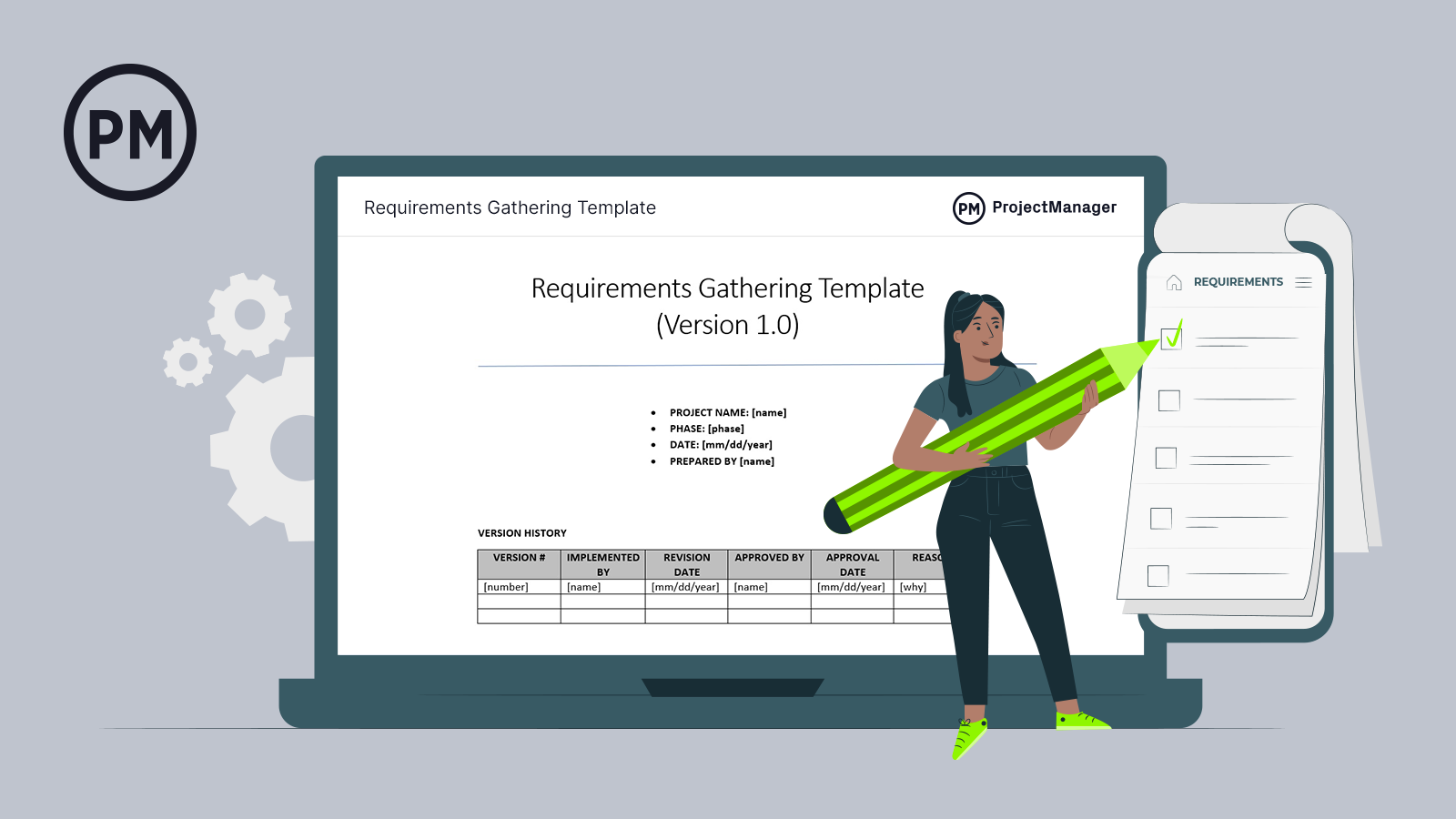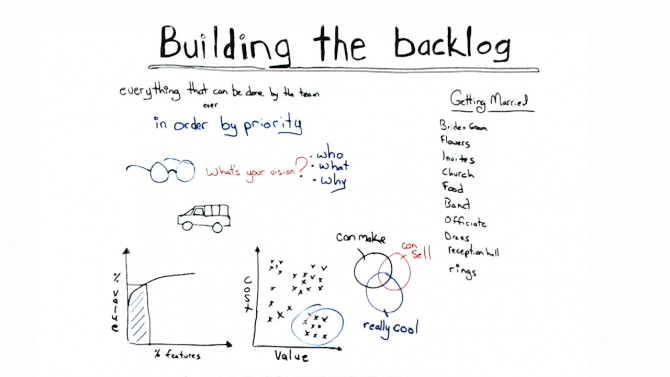Getting a project done requires prioritizing tasks. Learn how a project backlog can help. We’ll show you have to create one to better manage your project.
What Is a Project Backlog?
A project backlog is a list of project tasks prioritized for a specific period in the project. It shows what must be completed over that period and the order in which it should be completed. This prioritized list includes epics, features, requirements, bugs and any other task that is necessary to complete. A project backlog is used in almost every kind of project.
Project management software helps with project backlog. ProjectManager is award-winning project management software that has kanban boards that can help managers and their teams manage their project backlog. Files and images can be attached to kanban cards, which can then be prioritized and tagged to make them easier to find. A project backlog column can be created to capture what the team can use to collaborate on how to execute them, while the manager gets visibility into their work and can reallocate resources as needed to clear any bottlenecks. Get started with ProjectManager today for free.

How to Create a Project Backlog
Creating a project backlog ensures that the work you need to get done is completed on time. It can take complex tasks and create the order of steps necessary to complete them. Follow these steps to create your project backlog.
1. Collect Project or Product Requirements
Identify the project requirements by speaking with project stakeholders and getting well-defined requirements from them. You should have a list of conditions or capabilities that must be met by the project’s final delivery. In agile, this is called a user story, which is the general explanation for a feature from the perspective of the customer.

Get your free
Requirements Gathering Template
Use this free Requirements Gathering Template to manage your projects better.
Get the Template
2. Set a Priority Level for Each User Story
Take the list of requirements and determine which are the most important, somewhat important and least important. Keep the goal of the project in mind, assess the requirements and determine which must be included and which is not important to the final deliverable. You can use the MoSCoW method, which is an acronym for must-have, should have, could have and won’t have.
3. Identify Project Deliverables
Define the project deliverables. For an output to be classified as a deliverable, it must be within the scope of the project, stakeholders must agree on it, it must be the result of deliberate work and have a definite role in accomplishing the project’s objectives.
4. Schedule Work In Sprints
A sprint is a short period of time in which a team works to complete a specific set of tasks. It’s a term that comes from working in an agile, iterative environment. To avoid wasting time, plan the sprint schedule by creating a document that outlines the sprint planning from end to end.
5. Track Your Project Backlog
To ensure that you’re sticking to the sprint schedule, you’ll want to track the progress of those sprints. You can use a project management tool such as kanban boards, Gantt charts or a task list that shows the percentage complete. Dashboards and reports also help track progress.
Project Backlog Explained
The project backlog is another way to refer to the project scope. In this video with our host Devin Deen, Scrum Master, you’ll find out how to build a project backlog to prioritize tasks in both Agile and traditional Waterfall projects.
Here’s a shot of the whiteboard for your reference!

In this video, Devin explained that “product backlog” is a term that’s used commonly in Agile projects but also relevant to projects being managed with Waterfall methodology, as well. The term refers to everything that can be done by the team in order of priority: in other words the project scope.
Devin discussed:
- Establishing the requirements;
- Considering the cost of each item and the perceived value to customers; and
- Prioritizing the requirements, focusing on the ones that your users will use and that you can realistically deliver.
He also provided some colorful examples to illustrate these points, particularly if you’re a farmer in Des Moines.
Pro tip: As Devin said, the key takeaway is that when you’re building your product backlog make sure that you have a very clear vision and that you have an ordered set of prioritized requirements. Check out these backlog grooming tips for help.
We hope you’ve enjoyed hearing these tips for creating a product backlog for your project.
Thanks for watching!
Transcription
Hi, thank you for joining me. I’m Devin and today we’re going to talk about Building the Product Backlog. Now, “Product Backlog” is a term that’s often used in Agile projects, but it’s also relevant to the traditional Waterfall projects that we are more used to delivering our projects and products.
What it refers to is effectively everything that can be done by the team, ever, in order by priority. In other terms, it’s the scope of a project. What’s important when you’re building your product backlog is to make sure that you have a very clear vision and that you have an ordered set of prioritized requirements.
Let’s start by using an example. Now, if I have a vision of building a car, you can build anything from a Corvette through to a Mini Cooper, or perhaps a pickup truck. So, when I’m forming the vision of a car, it’s important to define that car in terms of who’s going to use it, what are they going to use the car for, and why they want to have the features of that car.
So let’s say take for example a farmer, outside of Des Moines, who wants to have a car that he can use to transport his feed for cattle at the end of the day. He’s going to obviously have a pickup truck. But let’s say that the person who’s going to have that car is a commuter outside suburban Chicago. And then they want to use that car to drop off the kids on their way to work every morning, so they can have an efficient commute to work. Well, if that’s the case for that vision, then instead of having a pickup truck, you’re obviously going to get a minivan.
When you’re forming that vision, when you start getting those requirements together, it’s important to group them in terms of how much is going to cost to deliver an item. So relative to one another, is it expensive, or is it less expensive? Is it a big item to deliver, or a smaller item to deliver? And then, of course, the perceived value that you think your customers are going to get out of that particular requirement or feature.
These are the items that you want to focus on delivering first, those items that are of low cost and higher value. It’s important to remember the Pareto rule as well when you’re delivering and developing your product backlog. Most of your users are actually going to get 80% of the value of your product from 20% of those features. So again, that’s why a prioritized list of requirements or user stories is really important when you’re forming that product backlog.
You’re thinking about your product backlog and about those user requirements, really what you’re looking to do is to develop the items or features that are right here in the middle of this Venn diagram. The items that are really cool to do, the ones that you’re passionate about, the ones that you can actually make in the time frame that you’re given, and the ones most importantly that your users are going to use, or that you can sell if you’re developing a product. So it’s those items right there.
Let’s do an example that most people are familiar with. Let’s talk about getting married. Now, if I was getting married, there’s a list of things that are important to me as a married couple. Certainly want to have some invitations, maybe a church, definitely some wedding rings, and obviously the bride and groom are really important.
Let’s take a user’s story like this. Let’s say that [we’re] a bride and groom and I want to get married, with my immediate family and close friends, and pay for the wedding ourselves so that I can start life out debt-free. Well, if that’s the case for my vision then certainly the priority of these requirements is going to change.
So with the user story that I just described, where your bride and groom want to get married, pay for the wedding themselves so they can start life debt-free, they might have a different set of priorities for those requirements. Starting with themselves, of course, the bride and groom and ending up, perhaps at the band level. And, if they actually distill it down to the fundamental parts of their wedding ceremony on what they want to achieve, they might actually just stop right here, right there after church. And in fact, if I were them, I might go to Vegas to achieve that.

